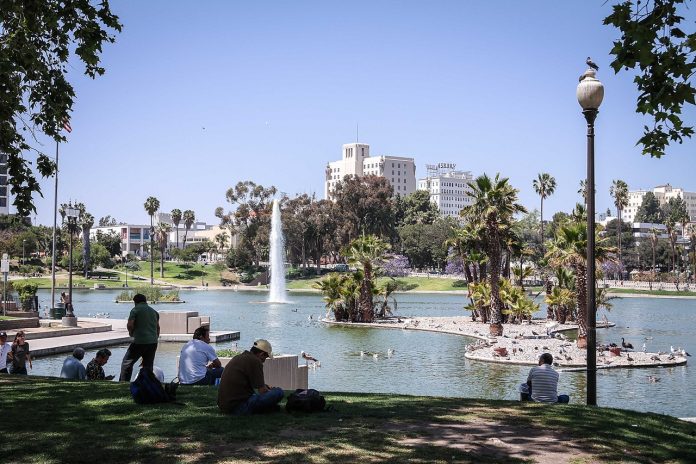By Jerry Yudelson*
A mega-drought showed California’s cities could reduce water demand by 25 percent, at least temporarily. But as climate change accelerates extreme weather, with fewer options for new supplies, planners seek to lock in long-term, structural solutions to rising urban demand.
Naturally, many seek answers from the green building movement. After all, the minimum acceptable water saving in a certified green building is now 30 percent higher than typical ones just built to “normal” codes.
I too grew excited at the enormous potential. My 2011 book, Dry Run: Preventing the Next Urban Water Crisis, offered a menu of options for water planners, with design measures that could help buildings cut water use in half, or more.
Since then, the green building movement has adopted the mantra of “net zero.” But most people in this movement–architects, engineers, builders and consultants–are not water professionals. They too often and too easily conflate energy use and water use. When people began to call for net-zero water use in green buildings, what did they envision?
Net zero water appears to involve three simple R’s. Retain: capture all rainwater that falls on a building site and bring it back into the building to be treated for use in flushing toilets, cooling tower makeup water, and site irrigation. Recycle: reuse all wastewater from a building for the same or similar uses. Reduce: use water-saving fixtures along with efficient plants and cooling towers, much as net-zero energy designs do.
Sounds obvious? Not so fast. Serious problems arise that prevent “net-zero” from extending to urban water supplies, either in concept or in practice.
For starters, energy and water are very different animals. Net-zero energy is an accounting artifice, based on photovoltaic systems. It assumes a site can generate enough onsite solar energy–a remarkably constant year-round supply source–to equal or exceed that site’s annual demand. Net-zero water, by contrast, deals with a physical quantity of fairly constant demand but highly variable supply. In drier regions like Los Angeles–where net-zero water would be most valued– annual rainfall from 1999-2008 ranged from 3.2 inches to 38 inches, a factor of 12 times. Just imagine the space and expense required to capture and store all the incident water potentially falling on an arid building site.
This leads to another discrepancy between energy and water: public health and financial liability. For more than a century, water professionals have addressed hard questions about urban building.
Will the owner or facility manager maintain onsite water and wastewater treatment systems? Who pays for upkeep and replacement of system components? What happens if an ultraviolet disinfection lamp fails over a weekend and no one knows? Will fixtures and systems be warranted for use with recycled wastewater with a higher TDS or biological materials?
One further setback for net zero is that the green building movement has run out of steam. From 2013- 2016, annual US LEED-certified new buildings fell nearly a third. To be sure, green building measures may still boost water conservation in many other buildings. But outside urban office towers and trophy corporate headquarters, the more rigorous, third-party certified buildings are in short supply.
Finally, the movement behind net zero ignores the elephant in the city: existing structures. Last year it celebrated the 700 LEED-certified office buildings, but neglected 5.8 million leaky old brown ones, or 99.99 percent of US building stock. Other than the US EPA Water Sense programme, there has been almost no action in 133 million residential units.
So, what can water professionals do to reduce water use in the built environment? Plenty.
Start with the law. Cities can incorporate appropriate green- building measures into new building codes. In California, codes like “Cal Green” affect not only new construction but also renovations that involve more than 20 percent of a building’s value. We need to reform codes and regulations for projects eager to reuse water onsite, with appropriate public health safeguards.
Money matters more than you think. We should keep using increasing block-rate water pricing. Invest in public education. Offer financial incentives for replacing old water-intensive lawns, nozzles, and toilets–with a bonus for retrofits in existing buildings rather than simply subsidising new developments.
Ecological design helps “slow, spread and sink.” So continue with large scale “toilet to tap” programmes involving groundwater recharge, urban green space irrigation, terraced landscaping and low-impact development.
Above all, embrace whole systems thinking. You can integrate water supply, wastewater treatment, flood control, and environmental protection into a comprehensive approach that maintains the resilience of urban water supplies in an era of rapid climate change.
Think in terms of true sustainability; the systems you envision should be “low cost, long life and loose fit,” adaptable to changing urban land use and building patterns.
Green building isn’t going to do the job for you but it can assist along the way.








